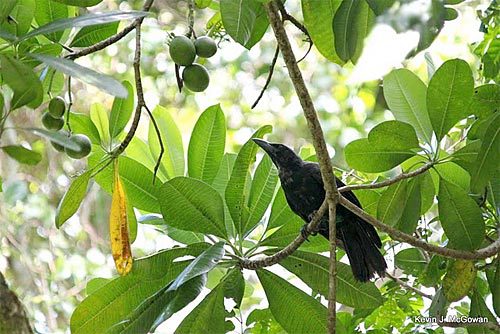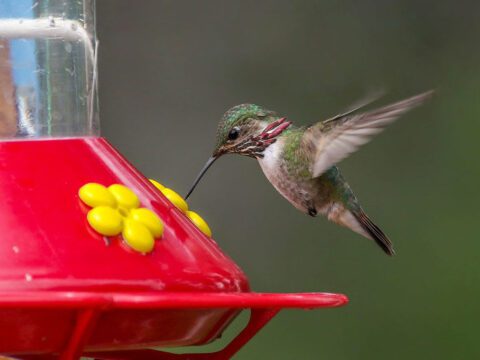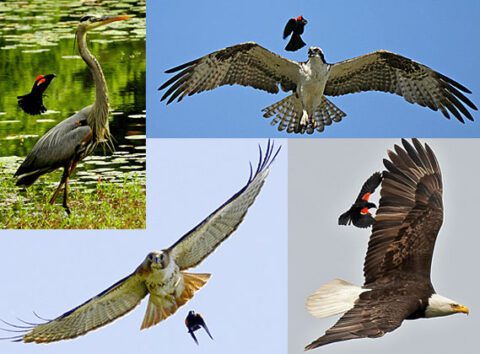Crow Researcher Finds Paradise, Tomorrow
By Kevin McGowan March 9, 2010
Today was our first morning off and my first opportunity to hit the beach and do random birding. I don’t really know what day it is or what time, and we’ve had to get up so early every morning that it doesn’t seem to matter.
I’m on the island of Rota in the Commonwealth of the Northern Mariana Islands about halfway between Japan and New Guinea (you go to Guam and take a right). It’s 15 hours into the future from Ithaca, which is very confusing. We left Ithaca and got here tomorrow, and we will leave here and get home yesterday.
Tomorrow morning (by Rota time) we are trying to catch adult Mariana Crows (Corvus kubaryi), a critically endangered species found nowhere else on earth. There are only about 200 left on the planet, and fewer than 50 have ever been banded. We’ve already caught one and are trying to catch more of them so we can attach small radio-transmitters that will let us follow them around and learn why they have been declining for so long.
The Mariana Crow used to be found all over the limestone forests of Guam and Rota, which grow in the remnants of coral reefs built up atop underwater volcanoes. The accidental but devastating introduction of the brown tree snake onto Guam finished off the crows on that island. Rota was spared the brown tree snake, but the crow population there has also declined dramatically over the last 20 years. A team from the University of Washington is working hard to understand why. (The project website has a description and some cool rare bird photos.)
My crow-studying colleague and collaborator Dr. Anne Clark of Binghamton University and I are here to consult on the crow research, hoping that our 20-plus years of experience with American and Fish crows might be able to help their work. For me it’s a spectacular opportunity to learn about a very, very different crow species, while contributing to the conservation of a critically endangered bird.
And the surroundings aren’t bad, either! Rota is just about everything anyone ever wanted in a tropical paradise. Beautiful coconut palm-lined beaches, incredible coral reefs with spectacular tropical fish, wonderfully friendly people, and unusual birds.
Once we catch one of these crows I will blog again to let you know how it went. But, even though it’s very, very early in the morning on Saturday in Ithaca, it’s just about midnight on Sunday here, and, paradise or not, I have to climb into my palm-frond blind before dawn tomorrow.

All About Birds
is a free resource
Available for everyone,
funded by donors like you
American Kestrel by Blair Dudeck / Macaulay Library


